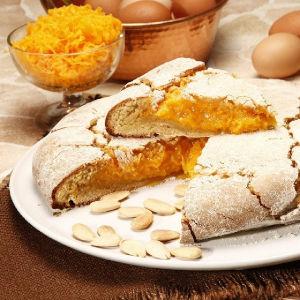Yesterday, we surveyed Portuguese Breads – just a few of the hundreds of varieties found in every corner of the country. Today, we’ll see a few more breads – sweet deserts – along with custards, cakes and puddings. And we’ll take a look at some of Portugal’s signature beverages…
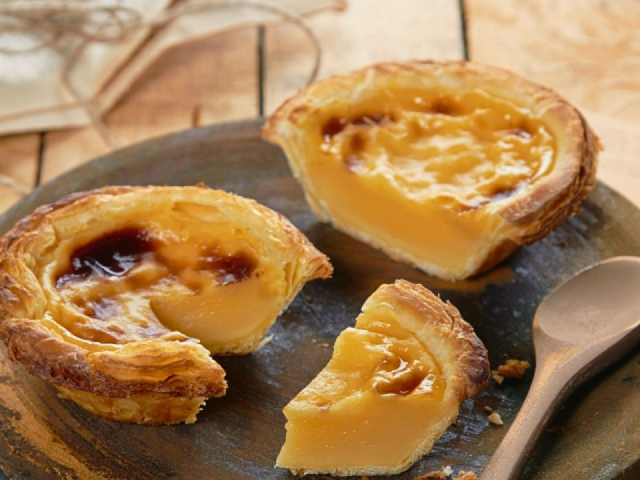
Pastéis de Nata: Portugal’s famous custard tarts. Everybody eats ’em, everywhere, anytime.
Portugal seems to have imported the best of all the famous European and Middle Eastern desserts. They have their own takes on doughnuts, cheesecake, sponge cake, Crème Caramel, ice cream, and more. Below, I’ve spotlighted some characteristically Portuguese deserts you may not have encountered before, but which are beloved classics in their homeland…
Pastéis de Nata: Perhaps the most famous of Portuguese desserts, this is little more than an egg custard tart flavoured with lemon zest (see featured photo, above). But it’s importance to Portuguese culture cannot be overestimated. According to Wikipedia: “In 2009 The Guardian listed Pastéis as one of the 50 ‘best things to eat’ in the world. […] In 2011, following the result of a public vote. Pastel de Belem was announced one of Portugal’s Seven Wonders of Gastronomy.” They’re available everywhere, and everybody loves em.
Arroz Doce: Portuguese Rice Pudding. It’s made the same basic way as all Rice Puddings: Simmer short-grain rice with milk. But you add egg yolks, sugar lemon zesty and cinnamon. Which makes Arroz Doce unlike any other Rice Pudding you’ve ever tasted!
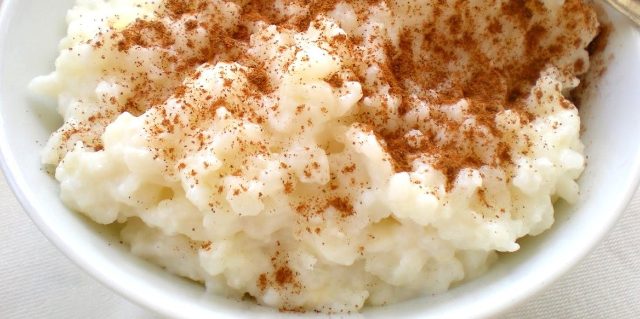
It’s popular around the year-end holidays, but is enjoyed warm or cold, at any meal, and topped with coconut milk, chocolate, fruit or powdered cinnamon.
Brigadeiros: Brazilian Fudge Balls. Think ‘Rum Balls’. They’re made with Sweetened Condensed Milk, cocoa powder, sugar, butter and salt. The mixture is cooked on medium-low stirring constantly until it thickens. The its left to cool and set. After which you portion it out (use a small kitchen scoop for consistency), roll into balls by hand, and roll in chocolate sprinkles. Or whatever colour or flavour of sprinkles you like. Or just dust with powdered sugar. These pastries/candies are always present at birthday parties, but folks eat them year round with any excuse. Everybody loves them.
Bolo de Amêndoa: Portuguese Almond Torte. Made without conventional flour, this cake is medium-dense bur not heavy. It’s based on ground Almonds and calls for sugar, egg yolks, cinnamon, vanilla and lemon zest.
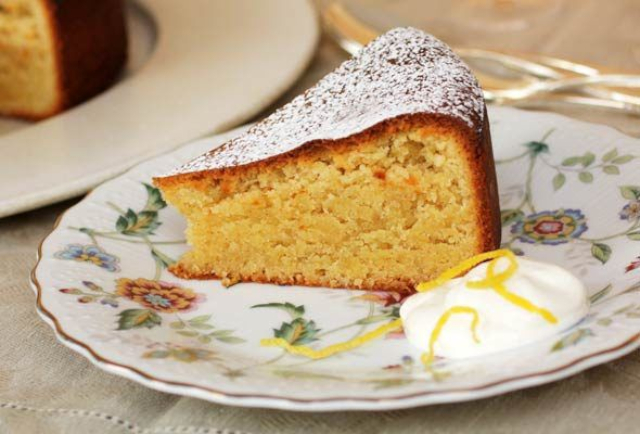
Dust the finished, cooled cake with powdered sugar and enjoy by itself, or with jam and/or shipped cream!
There are literally hundreds of Portuguese desserts (many with dozens or more variations) to explore. If you like the classic, ‘national dishes’ mentioned above, get Googling and see what else this rich food culture has to offer!
Bread Desserts
As we’ve seen in previous posts, the Portuguese have a special place in their hearts – and stomachs – for breads of all kinds. And that extends to deserts! Following are just a few particularly Portuguese bread-based desserts you’ll find in all parts of the country…
Folar: A classic sweet dough bread, usually served at Christmas and Easter, accompanied by Arroz Doce (see above) – Portuguese festive rice pudding. Folar is a rich light, fluffy white bread made from flour, yeast, milk, eggs, and flavorings including honey, sugar and lemon peel. It’s traditionally baked in a tall-sided round cake pan as an array of pull-apart buns.
Pão de Deus: ‘The Dessert of God’ is a brioche bun made with flour, milk, yeast, butter and eggs. The secret is in the topping: A sort of custard made from shredded coconut, eggs and sugar.
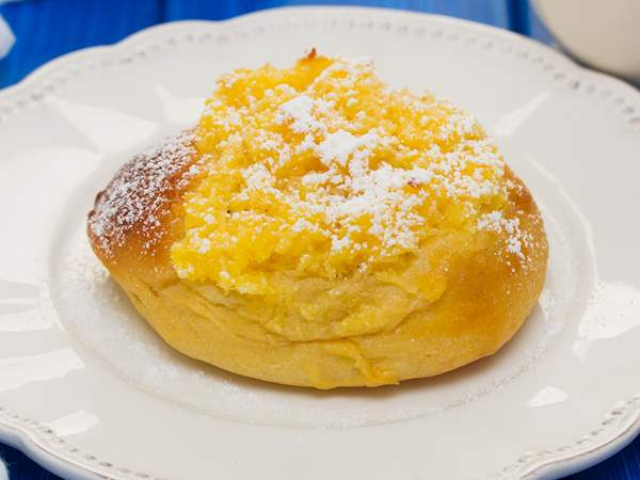
It’s traditionally associated with All Saints’ Day, and the tradition of pão-por-deus—where children knock on doors reciting poetry and ask for sweets. But it is enjoyed all year round.
Pão de Rala: A special bread which, according to tradition, was invented by nuns at Santa Helena do Monte Calvário convent, located in Évora, to commemorate a visit by King Sebastian. A sweet almond-based dough is wrapped around filling made from sugar, fios de ovos (an egg-based mix), and jam. Now-a-days, this delicacy is available in most bake shops across Portugal (See photo, top of page.).
Beverages
Portugal is justifiably famous for its fortified dessert wines, bur it’s also home to dozens of kinds of sodas (soft drinks) and coffee drinks…
Wines: Portuguese wines are known around the world, from dry to sweet, and light to Port. Here in North America, Portuguese Table Wines are only just starting to get the recognition they deserve.
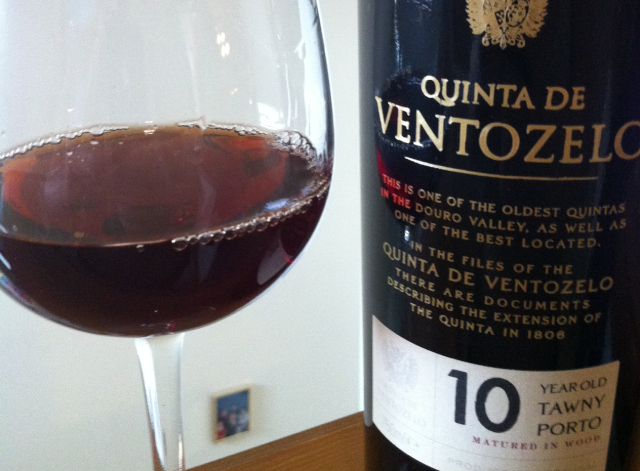
Then, of course, there’s Port (the country’s famous fortified wine) and Madeira, summery signature whites like Vinho Verde, and Rosé tipples like Mateus – which has been a strong seller everywhere in Canada I’ve lived for at least 50 years. For a comprehensive crash course in Portuguese wines, visit Wine Folly.
Licor Beirão: A distilled spirit that advertises itself as ‘the liqueur of Portugal’. It’s a sweet shot flavoured with a secret recipe of herbs, cinnamon, mint, lavender, rosemary and cardamon. Usually served over ice to cut the syropy taste.
Ginjinha: A popular Cherry-based liqueur features Morello cherries, a variety of spices, and plenty of sugar. There have been bars in Lisbon dedicated to serving this sweet shot for more than a century.
Aguardente: Literally, ‘Firewater’, or Burning Water’. The name may be applied to any spirit over 50 alcohol by volume. But it’s usually applied to the raw alcohol.
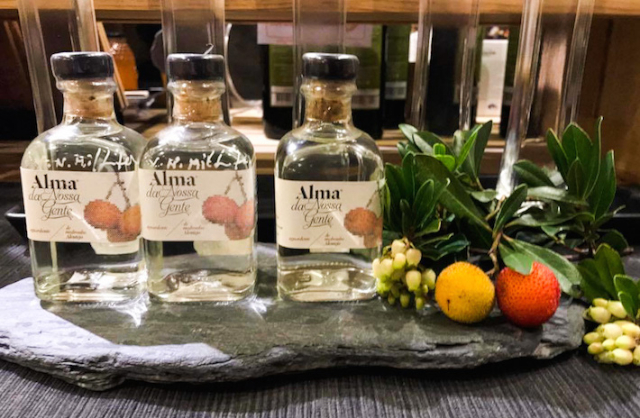
It may be distilled from grape wine or other fermented fruits, used to fortify dessert wines such as Port. It’s also used – especially in the Azores – to spike Espresso. Nobody ever drinks it straight up, even over ice.
Água com gás or Água das Pedras: Sparkling Mineral; Water. The latter name is as iconic in Portugal as Perrier is in France, and is bottled only from the original source in the northern district of Vila Real, at the town of Pedras Salgadas, which translates into ‘salty stones’.
Bica or Strong Coffee: Bica is the Portuguese name for espresso. It’s what the Portuguese think of first when they want a coffee. There are Bica shops al over the place, in every street.
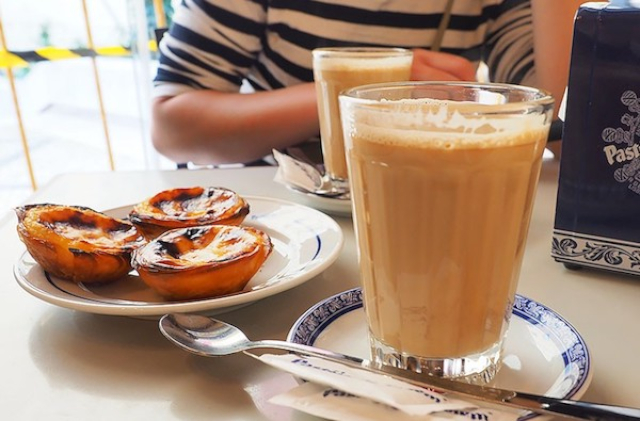
Strong Black Coffee is just what it says. The Portuguese love Strong Coffee with lots of milk, mainly consumed in the afternoon (at Lanche time) with ‘a bite of pastry’. Galão (see photo directly above) is the Portuguese variant of Café Latté, mixed with three parts foamed milk to one coffee, and sugar.
Now you know enough to ensure…
… You’ll stay sweetened and caffeinated anywhere, anytime when you’re in Portugal! And remember… Beverages – alcoholic or not – usually in company of pastries or desserts – are a foundation element of all Portuguese social customs.
Take time to explore the myriad varieties of Portuguese foods and beverages. Get Googling. And luxuriate in an unparalleled gastronomic experience!
~ Maggie J.

